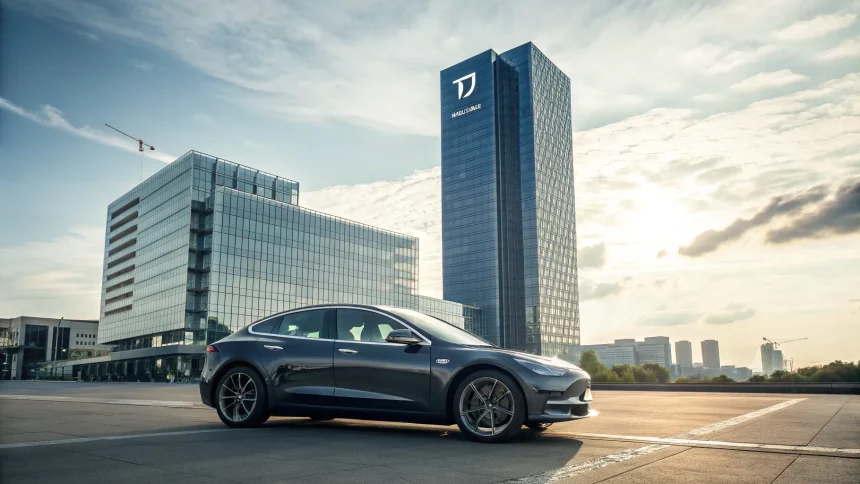In a signal that could sway investor sentiment, a major European bank reiterated confidence in Tesla, framing the electric car maker’s next chapter as an opportunity rather than a setback. The call arrives as markets debate the strength of electric vehicle demand, pricing pressure, and the pace of software-driven profits.
“Deutsche Bank has a buy rating on Tesla.”
The endorsement points to expectations that Tesla can outperform its peers over the medium term. It also highlights how analysts continue to split over the company’s balance between growth, margins, and software prospects. The timing is important: automakers are recalibrating EV strategies, while investors look for clearer signs of demand, cost discipline, and product cadence.
Why the rating matters
Buy ratings from large banks often influence how institutions view risk. They can shape fund flows, media coverage, and boardroom debates. For Tesla, the call suggests faith in the company’s mix of vehicles, software, and energy products, even as the broader EV market moves through a slower phase.
Analysts who are positive often cite Tesla’s scale, manufacturing know-how, and the promise of recurring software revenue. They also point to the company’s global charging footprint and brand recognition, which can support resale values and reduce total cost of ownership for drivers.
Tesla’s shifting playbook
Tesla entered mass-market segments with aggressive price cuts, trading margin for volume. That strategy tested investor patience. The bank’s stance implies that the company can manage this trade-off through cost reductions, factory efficiency, and software features tied to autonomy and driver assistance.
New and refreshed models remain central. The rollout pace, pricing, and production learning curves will influence both earnings and market share. Expansion in energy storage and grid services adds another potential profit driver, less tied to auto cycles and more linked to renewable buildouts.
The debate on demand and competition
Skeptics argue that EV growth has cooled, especially at higher price points. Hybrid models are gaining traction with cost-conscious buyers. Chinese automakers are pushing hard on affordability and feature sets, raising questions about future pricing power in key markets.
These concerns are not trivial. They shape expectations for factory utilization, promotional activity, and the size of Tesla’s addressable market. They also frame regulatory risks, including tariffs, incentives, and changing emissions rules that can shift demand between regions.
Software promise, timelines, and trust
Bullish views lean on autonomy and driver-assistance software as a margin engine. Subscription features and over-the-air updates can smooth revenue and widen moats. The challenge is timing. Safety validation, regulatory review, and consumer trust will decide how fast software turns into cash flow.
Investors will look for credible milestones, such as improved safety metrics, wider feature availability, and consistent user engagement. Clear reporting on take rates and retention would help quantify the thesis.
What the rating assumes
Though price targets were not discussed, a buy rating usually implies confidence in medium-term earnings growth. That view often rests on a few assumptions:
- Stable or improving demand as new models and pricing refreshes arrive.
- Lower unit costs from manufacturing gains and supply-chain savings.
- Rising software and energy contributions to profit.
- Manageable regulatory and competitive pressure in key markets.
Risks and counterpoints
Execution risk remains high. Model delays, supply hiccups, or slower software adoption could weigh on results. Competition may force more discounting, challenging margins just as factories scale.
Macro conditions also matter. Higher borrowing costs can dampen auto purchases. Currency swings affect reported results for a global producer. Policy changes—such as incentive rollbacks or new tariffs—can shift demand quickly.
What to watch next
Investors are likely to track production updates, delivery trends, and commentary on order backlogs. They will parse management’s remarks on software milestones and energy storage growth. Clarity on product roadmaps and factory timelines will shape confidence for the next year.
As one of the market’s most discussed companies, Tesla attracts strong opinions on both sides. The bank’s stance adds weight to the bullish case, but the burden of proof sits with execution. If Tesla demonstrates steady demand, firmer margins, and tangible software traction, the call will look prescient. If not, the debate will intensify.
For now, the rating highlights a simple message: confidence in Tesla’s capacity to adapt. The next few quarters will test that view, with product launches, cost curves, and software adoption in clear focus.







